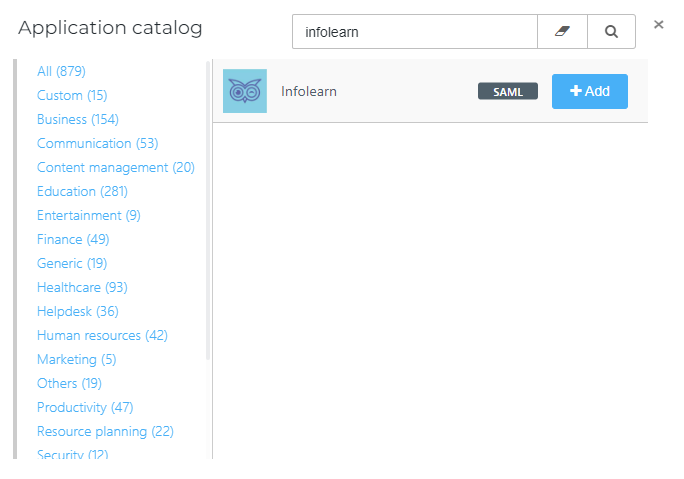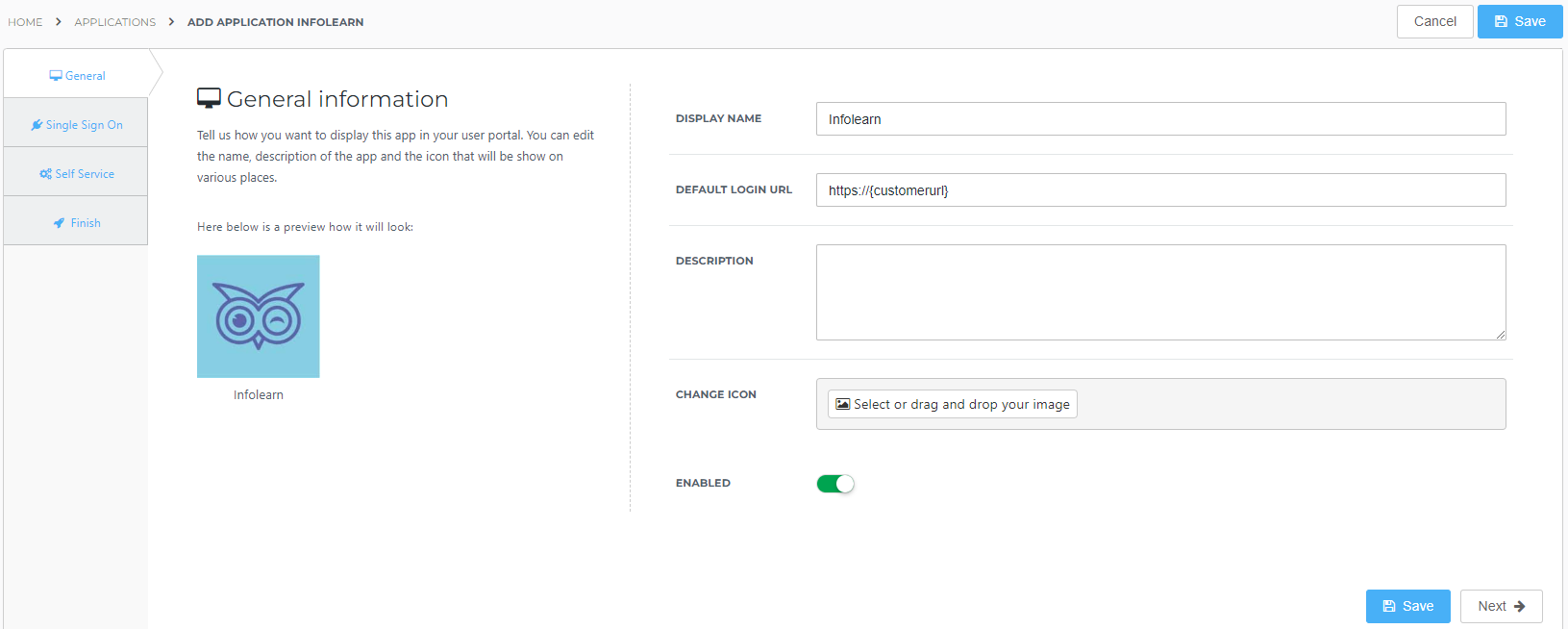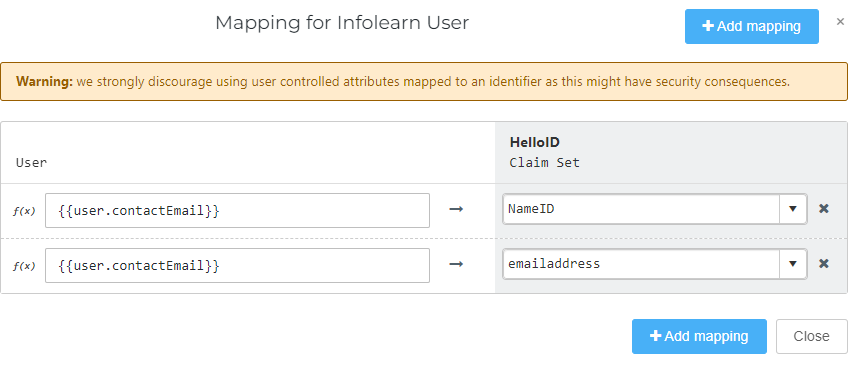Infolearn application setup
Introduction
This manual shows you how to set up SSO to Infolearn, using the SAML protocol. The configuration takes place in HelloID and has to be completed by Infolearn.
Requirements:
HelloID environment
Infolearn environment
Create or Import a Certificate
If there is no certificate yet, a certificate must be imported or created. This can be done in the HelloID Administrator Portal under Settings > Certificates. For this tutorial, we will use a self-signed certificate. Learn more about certificates here.
HelloID Application Setup
Add the Infolearn Application to HelloID
Create a new application in HelloID by navigating to Applications > Applications. Open the Application Catalog and search for "Infolearn". Find the SAML template, and click Add. Learn more about managing applications here.

General tab
On the General tab, fill the Default Login URL with the Infolearn environment SSO SAML endpoint URL. Click Next.

Single Sign-on tab
On the Single Sign-On tab, perform the following steps:
The Endpoint URL is already filled in. Replace the {customer} and {identifier} part with the values retrieved from Infolearn.
In the X509 Certificate dropdown, select the certificate that you created or imported previously.
The Extra audience has to be filled with the metadataurl from Infolearn
If required enter your Infolearn url in the SP-Initiated URL field. Setting value will cause HelloID to open the entered url first instead of starting the SAML flow directly.
As an additional layer of security, you can enable Validate and use ACS Request URL and enter the URLs that may start the SAML flow in the validation list.
Click Next.

Self service tab
On the Self Service tab, choose whether to automatically create a Self Service product, which makes the application requestable. This is optional. Click Next.
Finish tab
On the Finish tab, click Save to add the application to HelloID.
Application metadata
After saving the Infolearn application, click its Edit link on the applications overview. This will bring you to its properties page.
You now have two options to obtain the application metadata.
Static metadata (download)
You can simply click Download metadata at the right top of the screen and save the file to your local computer for later use in Infolearn.

Dynamic Metadata (URL)
You can copy the link address (something along the lines of https://enyoi.helloid.com/metadata/download?ApplicationGUID=e6e741f5-a469-4849-93f7-fe2e259a339f) and replace 'download' with 'index' to view the metadata.

Mapping set
After saving the Infolearn application, click its Edit link on the applications overview. This will bring you to its properties page. You can now edit the Mapping Set on the configuration tab.
Click Change Mappings for the SAML user.

The default mapping is using the user's contactEmail address as identifier. If required change this to another attribute. Please keep in mind that changing the identifier always has to be processed on the infolearn side as well.

Infolearn
Request SAML
In order to make the connection, Infolearn needs to add the connection on their side. This can be requested at Infolearn.
To configure the SSO on the Infolearn side, they will need the following information:
Metadata URLPlease provide the dynamic Metadata URL from the previous step to Infolearn
Tenant IDThe name of your HelloID portal used in the mapping.
Login URL
The login URL also found in the metadata in the format of "https://{customer}.helloid.com/relayservice/redirect/396f41ed-6d3a-4ef3-bc4c-a64c5b1847e9"
Logout URLThe sign out URL of your HelloID environment in the format "https://{customer}.helloid.com/authentication/signoff"